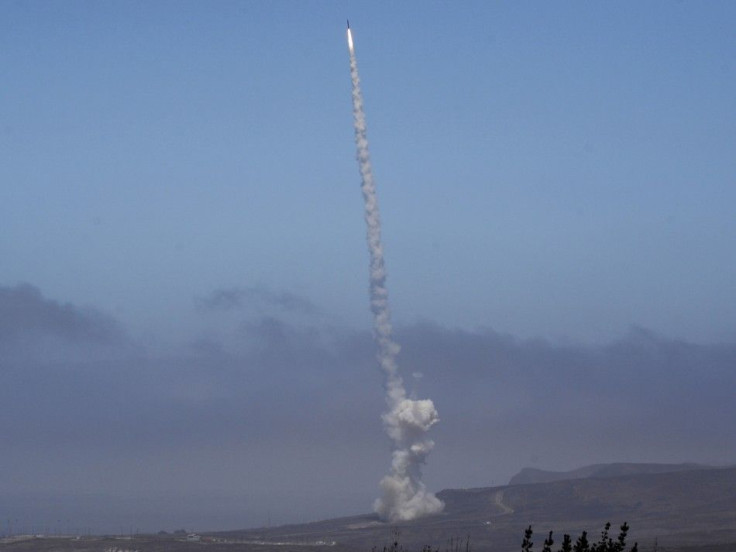Russia Develops US-Like Ballistic GMD, THAAD Missile Defense Systems; Fears US’ Cruise Missile Rearmament Program

Russia has started to develop a line of defense systems similar to the United States' Terminal High Altitude Area Defense (THAAD) and Ground-based Midcourse Defense (GMD) systems, local media reports announced. The country has also come up with an early warning system it will put in space that will enable it to detect ballistic missile launches. All will be online before 2020.
Russia is fast tracking the deployment of such ballistic missile systems in response to the U.S.' aggressive rearmament program of its cruise missiles. President Vladimir Putin's bailiwick believed its archenemy can launch against it a barrage of up to 7,000 missiles on just the first strike in 2015-2016.
Quoting Pavel Sozinov, the chief engineer of the Almaz-Antey defense corporation, local media said on Monday that the Russian system akin to the THAAD will enable Russia to "intercept medium-range ballistic missiles and intercontinental ballistic missiles." However, these will be only on a limited scale. Trials are expected to commence soon, Sozinov said.
The configurations on the Russian GMD, he said, are being developed to make it more mobile over than that of the U.S. Russian military wanted it to have "substantially more efficient interception than the Americans."
Previously known as National Missile Defense (NMD), the GMD is the U.S.' system for intercepting incoming warheads in space. It is a major component of the American missile defense strategy to counter ballistic missiles, including intercontinental ballistic missiles (ICBMs) carrying nuclear, chemical, biological or conventional warheads in a ballistic flight trajectory. The THAAD, on the hand, is an anti-ballistic missile system designed to shoot down short, medium, and intermediate ballistic missiles in their terminal phase using a hit-to-kill approach. The missile carries no warhead but relies on the kinetic energy of the impact to destroy the incoming missile.
Sozinov also said on Monday that Russia's upgraded space-based missile attack warning system is on track to become operational by 2020, or even earlier. The system will help Russia detect moving targets at medium and high altitudes. According to TASS, Russia has achieved significant success in developing fuel for missile interceptors and heat-resistant coatings not easily destroyed by heat of up to 3,500 degrees Centigrade. It added Russian scientists continue to work on coatings for warheads that will resist "heat of thousands of degrees."
Sozinov said that of the 7,000 missiles, 5,000 of those will be launched by the U.S. from submarines. He claimed this is the reason why the U.S. redesigned three Ohio-class nuclear submarines. Instead of inter-continental ballistic missiles, each submarine will now be armed with cruise missiles, maximum of up to 154.
"This is a huge potential of the first stage massive strike, which must be taken into account while building (Russian) anti-missile defense," Sozinov told a conference marking the 100th anniversary of the Russian air defese troops. He added the first stage massive strike could damage Russia's strategic nuclear force.
In the same conference, Viktor Bondarev, Air Force Commander, said Russia's Aerospace Defense Forces is awaiting now the delivery of at least five S-400 air defense missile regiments and over 20 Pantsir-S air defense artillery and missile battalions, including fighter aircraft capable of destroying hypersonic and ballistic missiles such as the SU-35S.





















